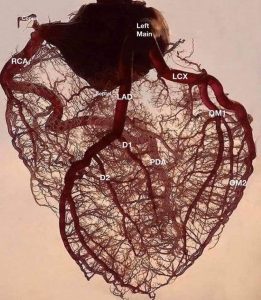Small Vessel Heart Disease
 Have you seen this great picture? Former NCCRA President Mike Dunlap uses to educate his patients about small vessel disease. Here is what he shares with them:
Have you seen this great picture? Former NCCRA President Mike Dunlap uses to educate his patients about small vessel disease. Here is what he shares with them:
Small vessel disease is a condition in which the walls of the small arteries in the heart are damaged. The condition causes signs and symptoms of heart disease, such as chest pain (angina).
Small vessel disease is sometimes called coronary microvascular disease or small vessel heart disease. It’s often diagnosed after a doctor finds little or no narrowing in the main arteries of your heart, despite your having symptoms that suggest heart disease.
Small vessel disease is more common in women and in people who have diabetes or high blood pressure. The condition is treatable but can be difficult to detect. The large vessels in your heart can become narrowed or blocked through a condition in which fatty deposits build up in the arteries (atherosclerosis).
In small vessel disease, damage to the small vessels affects their ability to expand (endothelial dysfunction). As a result, your heart doesn’t get enough oxygen-rich blood. “Mayo Clinic Website”
This photo of the thousands of blood vessels in the heart really drives home the point that the potential for CAD doesn’t lie just in the major coronary arteries. We have this photo as our background on our classroom TV/computer screen. Whenever we have an education class, our patients see this photo. I hope it motivates them to take more responsibility in preventing the progression of their CAD. I’m quick to tell patients that if they already have disease in the major arteries of the heart, what are the chances you don’t also have small vessel disease. And we remind them that regular cardiorespiratory exercise is one of the best ways to treat this.
Thanks Mike! What educational tools or teaching points do you use with your patients. Please share with us!
